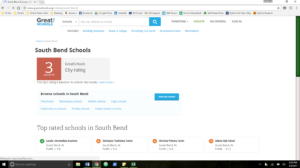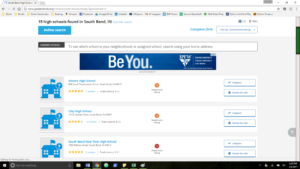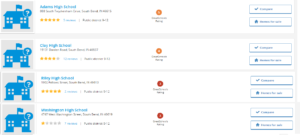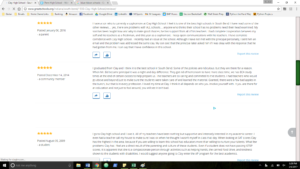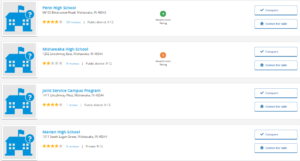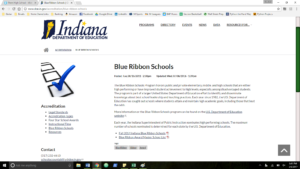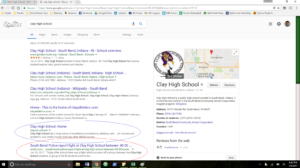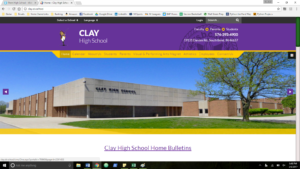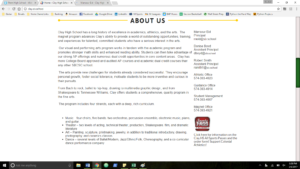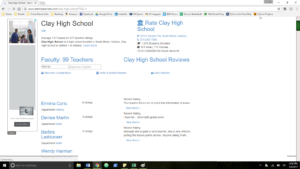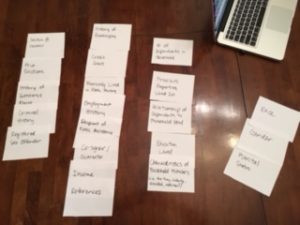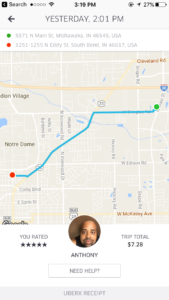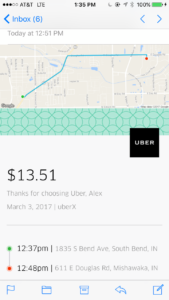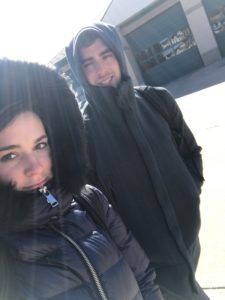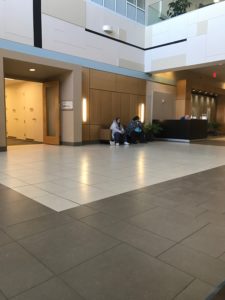Ethnography Summary
Victoria Velasquez participated in an analogous immersion by researching what it would be like for students post-graduation if they had committed crimes on private college campuses if these crime records were made accessible to the public.
Date: 3/5/17
Type: Analogous Immersion
Location: N/A done through research online
Team participants: Conducted analogous immersion alone
User Characteristics: “All-American Athlete”
Male, 21 years old
Great GPA, super involved in clubs on campus, applying for full-time jobs for after graduation
What is this person about – what drives him/her? Driven to graduate from ND and get a job at a prestigious financial services firm.
What is this person’s biggest point of pain? This person was found guilty of sexual assault on Notre Dame’s campus, and the Indiana Supreme Court recently ruled that Notre Dame needs to make its records of NDSP reports and investigations public. If police reports and investigations are made public, there is a chance that wrongdoings committed in college will follow students after graduation and adversely impact their opportunities for success in the future.
Related quotes from news articles: “…Turner’s once-promising future remains uncertain. But his extraordinary yet brief swim career is now tarnished, like a rusting trophy” (Washington Post). “Turner’s life and career were upended during a night of drinking” (Washington Post). “’…She is considered a victim while he goes [from] Stanford student and Olympic hopeful to registered sex offender for the rest of his life once he gets out of prison’” (Washington Post). “His life will never be the one that he dreamed about and worked so hard to achieve. That is a steep price to pay for 20 minutes of action out of his 20 plus years of life” (letter from Dan Turner, Brock Turner’s dad, to the judge in the case).
Top 3 Learnings:
- ND and other private institutions worry about the privacy of their students if they make their police reports public. They fear that minor disciplinary incidents (i.e. being too drunk at a football game) will be made public.
- Private schools throughout the country are selective in the crimes that they report to the student body for fear of violating students’ privacy.
- The media painted Brock Turner, an individual convicted of committing sexual assault at Stanford, as this all-American boy whose future was destroyed by his actions when he was heavily intoxicate.
Key Insight – (1) People will sympathize with someone they feel made a mistake that they have learned from. (2) There are major incongruences in how people perceive individuals who have committed crimes. It seems as if people are less reluctant to give those with privilege and promising futures a second chance at starting over. If Brock Turner had been a Black male at a community college, the public outcry surrounding his light sentencing might have been louder and more profound.
In the case of Brock Turner, his crime was made public because it was handled by public law enforcement. However, he was convicted of three felonies and sent to jail. He will always suffer the consequences of his actions. What he did was abhorrent, and any similar behavior done by individuals on other college campuses should be punished similarly and made public record.
This analogous immersion helped me understand why it’s important that Imani Unidad help marginalized communities become their own best advocates. This practice of denying people housing based on their criminal history could result in unfairly discriminating against lower income—and consequently, minority individuals—because they don’t have the luxury of having their crimes protected by privacy laws. While a property manager in downtown South Bend might not want to rent to someone on the sex offender list, a property manager in downtown Chicago might not realize that he or she is renting a luxury apartment to a person who was found guilty of committing rape on a private college campus.
